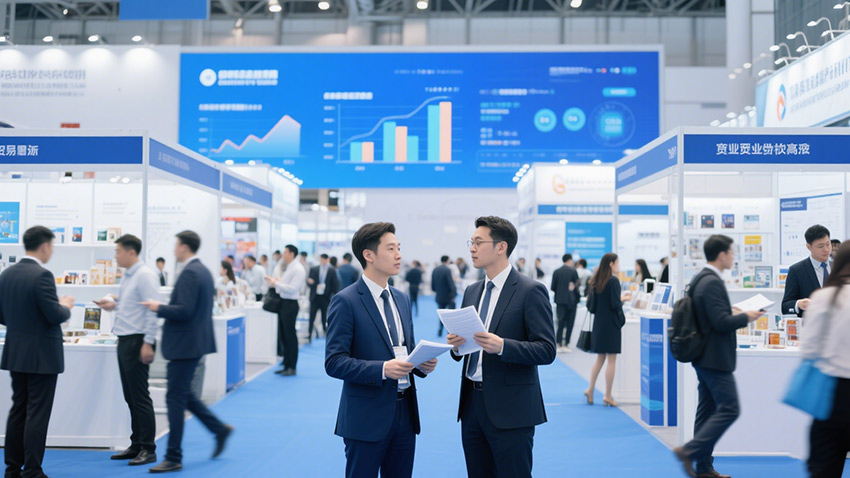I. Core Evaluation Criteria
- Traffic Quality and Target Market Match
A platform’s daily traffic and buyer geographic distribution directly impact procurement efficiency. For example, Alibaba.com has over 54 million daily IP visits, covering 240+ countries, suitable for global procurement; while Global Sources has higher penetration in Europe and the U.S., ideal for high-end industrial products. Verify traffic authenticity via tools like Alexa, and align with industry characteristics: e.g., focus on DirectIndustry for electronics, or Thomasnet for machinery. Additionally, the verticalization trend in 2025 is prominent—vertical platforms in chemicals, auto parts, etc. (such as the vertical ecosystem of Shushangyun) may occupy 60% of the market share, offering higher precision and professional services. - Supplier Authenticity and Credibility Assurance
The platform’s certification system is crucial. For instance, Alibaba’s “On-Site Certification” and “Gold Supplier” reduce fraud risks, but be cautious of platforms with lax audits. Verification methods include:- Reviewing suppliers’ transaction records, reviews, and dispute cases (e.g., 1688.com has faced multiple complaints due to deposit deduction disputes, highlighting rule loopholes).
- Prioritizing platforms supporting third-party factory audits (e.g., SGS) or blockchain traceability to ensure supply chain transparency.
- Functional Services and Technical Support
Platform tools that enhance procurement efficiency are key:- Basic functions: Completeness of online inquiry, order management, logistics tracking, etc. For example, Amazon Business supports multi-user accounts and approval workflows, suitable for large enterprises.
- Value-added services: E.g., Alibaba’s trade insurance, smart product selection tools, and Shushangyun’s AI demand forecasting and intelligent risk control.
- Technical upgrades: By 2025, automated transactions (e.g., smart contracts) and blockchain technology (e.g., Ant Group’s Trusple platform) will become mainstream. Platforms with these features can reduce operational costs.
- Cost Structure and ROI
Consider membership fees, commissions, promotion costs, and hidden costs:- Fee models: Alibaba.com’s standard membership costs ~25,000 RMB/year, with premium plans including keyword ads; platforms like Mercateo reduce entry costs by connecting supplier directories.
- ROI comparison: Evaluate inquiry conversion rates and order closure rates. For example, Global Sources has high-quality inquiries but lower traffic, suitable for high-unit-price products.
- Pitfalls: Beware of platforms attracting merchants with “free entry” but profiting from high commissions or mandatory promotions (e.g., 1688.com’s deposit disputes).
- Localized Services and Ecosystem Integration
The platform’s localization capabilities in target markets determine transaction smoothness:- Language & payment: Platforms like EC21 and ECplaza offer multilingual support, ideal for Japan and South Korea; TradeKey supports local payment methods in the Middle East.
- Logistics & compliance: Amazon Business relies on its own logistics, while DHgate provides cross-border logistics solutions. Additionally, driven by policies in 2025, emerging markets like Southeast Asia and the Middle East are growing rapidly—choosing platforms with deep local presence (e.g., Lazada for B2B) can seize opportunities.
- Ecosystem closure: Platforms like Shushangyun integrate logistics, finance, and technology to form a full-chain service of “transaction-delivery-financing,” reducing collaboration costs for purchasers.
II. Pitfall Avoidance Guide
- Beware of False Information and Malicious Transactions
- Some suppliers may provide fake qualifications or product images. Verify via video factory audits or production process records.
- Guard against “deposit fraud”: 1688.com has recently seen cases where buyers exploited rules to defraud deposits. Carefully read the platform’s dispute resolution clauses and prioritize third-party guaranteed transactions.
- Avoid High Commissions and Hidden Costs
- Some platforms profit from “free entry + high commissions” (e.g., Caihuoxia has been complained about due to after-sales disputes). Clarify cost structures in advance.
- Watch out for contract clauses like “automatic renewal” or “mandatory promotion” to avoid long-term binding.
- Verify Platform Security and Data Privacy
- Choose platforms using blockchain (e.g., supply chain traceability) and encrypted transmission to prevent data leaks.
- Avoid platforms without security certifications, as some free B2B platforms may resell purchaser information to third parties.
- Choose Procurement Agents Prudently
- If using an agent, verify their qualifications: at least 5 full-time staff, independent office space, and monitoring equipment are basic requirements.
- Sign a “one-thing-one-contract” agency agreement to clarify liability and avoid risks from long-term agreements.
- Focus on Platform Stability and After-Sales Support
- Avoid platforms with outdated technology (e.g., poor mobile experience affecting efficiency).
- Prioritize platforms with fast response, such as Alibaba.com’s 7×24-hour customer service, versus Caihuoxia’s delayed after-sales complaints.
III. Practical Tips
- Multi-Platform Portfolio Strategy
Use comprehensive platforms (e.g., Alibaba) for broad reach, vertical platforms (e.g., Shushangyun’s chemical platform) for precision procurement, and social media (e.g., LinkedIn) to proactively contact suppliers for complementarity. - Trial and Data Testing
Leverage free membership periods (e.g., Alibaba’s 30-day free display) to 发布 products and collect inquiry data. Analyze traffic sources and conversion rates via tools like Google Analytics to optimize strategies. - Establish a Risk Reserve Fund
Allocate 5%-10% of the budget for potential disputes or quality issues (e.g., return costs due to logistics damage). - Stay Updated on Industry Trends
As B2B e-commerce evolves toward intelligence and verticalization in 2025, regularly evaluate platform tech updates (e.g., AI recommendations, automated transactions) and adjust cooperation strategies promptly.
By following these criteria and strategies, purchasers can systematically select cost-effective B2B platforms, avoid common risks, and achieve optimal balance between procurement efficiency and costs.










Leave a Reply